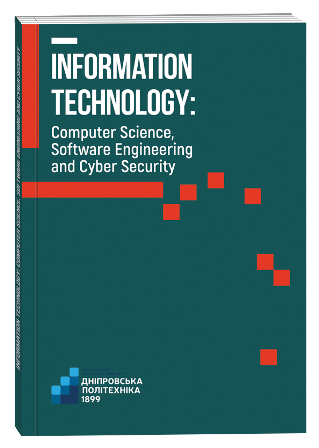COMPARISON OF REINFORCEMENT LEARNING AND MODEL PREDICTIVE CONTROL METHODS FOR UAV ROUTE PLANNING
DOI:
https://doi.org/10.32782/IT/2025-1-18Keywords:
drone, UAV, Reinforcement Learning, Model Predictive Control, route planning.Abstract
The article is devoted to an overview and comparison of two methods of UAV route planning: Reinforcement Learning and Model Predictive Control, which is a hot topic in the modern UAV navigation industry. The purpose of this paper is to determine the specifics of the use, limitations and other properties of the above methods. The article presents the principles of the above methods. Methodology. The paper compares the characteristics of Reinforcement Learning and Model Predictive Control methods for UAV route planning. The evaluation was carried out according to the following criteria: type of environment, the need for an accurate model of the environment, adaptability in dynamic environments, computational complexity, and data requirements. The scientific novelty is a comprehensive analysis of the efficiency of Reinforcement Learning and Model Predictive Control methods, in order to obtain the most popular comparative characteristics necessary for choosing an method. Conclusions. For the Reinforcement Learning method, the role of the agent, feedback, and the impact of the reward calculated using the Q-function on the model learning process are described. For the Model Predictive Control method, the features of using linear and nonlinear models for predicting future behaviour in the receding horizon strategy and the associated high computational complexity are outlined. The key advantages and limitations of the aforementioned methods are presented. The choice of a suitable route planning method depends not only on the specifics of the task, but also on the requirements for computing resources and the real-time response capabilities of the system under consideration. The importance of integrating different approaches to achieve optimal results in difficult conditions is emphasised. According to the results of the study, the characteristics of Reinforcement Learning and Model Predictive Control methods for building UAV routes are presented by the type of environment, the need for an accurate environment model, adaptability in dynamic environments, computational complexity, and data requirements. Further research in this area could focus on improving methods and algorithms that allow UAVs to adapt to changing environmental conditions in real time, combining Reinforcement Learning and Model Predictive Control methods with other route planning algorithms, such as A* or Ant Colony Optimisation, to take advantage of each.
References
Model Predictive Control for Optimal Motion Planning of Unmanned Aerial Vehicles / З.-Н. Буй та ін. In proceedings of 2024, the 7th International Conference on Control, Robotics and Informatics (ICCRI 2024). arXiv e-prints, arXiv-2410. 2024. URL: 10.48550/arXiv.2410.09799
Motion planning of multiple unmanned vehicles using sequential convex programming-based distributed model predictive control / С. Лю та ін. International Journal of Robust and Nonlinear Control. 2025. https://doi.org/10.1002/rnc.7633.
Model Predictive Contouring Control with Barrier and Lyapunov Functions for Stable Path-Following in UAV systems / Б. С. Гевара та ін. arXiv e-prints, arXiv-2411. 2024. URL: https://arxiv.org/abs/2411.00668
Polydoros A. S., Nalpantidis L. Survey of Model-Based Reinforcement Learning: Applications on Robotics. Journal of Intelligent & Robotic Systems. 2017. Т. 86, № 2. С. 153–173. https://doi.org/10.1007/s10846-017-0468-y
Xue, Y., & Chen, W. UAV Navigation Approach Based on Deep Reinforcement Learning in Large Cluttered 3D Environments. IEEE Transactions on Vehicular Technology. 2022. С. 3001–3014. https://doi.org/10.1109/tvt.2022.3218855
Woo J., Kim N. Collision avoidance for an unmanned surface vehicle using deep reinforcement learning. Ocean Engineering. 2020. Т. 199. С. 107001. https://doi.org/10.1016/j.oceaneng.2020.107001
Reichensdörfer E., Odenthal D., Wollherr D. On the Stability of Nonlinear Wheel-Slip Zero Dynamics in Traction Control Systems. IEEE Transactions on Control Systems Technology. 2018. Т. 28, № 2. С. 489–504. https://doi.org/10.1109/tcst.2018.2880932
Kanani K. K. J., Tiwari B. K., Kim T. W. Linear Parameter Varying Model Predictive-Based Controller for Trajectory Tracking of High-Fidelity Autonomous Vehicle. 2024 9th International Conference on Automation, Control and Robotics Engineering (CACRE), м. Jeju Island, Korea, Republic of, 18–20 лип. 2024 р. 2024. С. 148–153. https://doi.org/10.1109/cacre62362.2024.10635048
Design and implementation of a constrained model predictive control approach for unmanned aerial vehicles / M. Аліярі та ін. IEEE Access. 2022. С. 91750–91762. https://doi.org/10.1109/access.2022.3202020
Sutton R. S., Barto A. G. Reinforcement Learning: An Introduction. A Bradford Book, 2018. 552 с.
Holkar K. S., Waghmare L. M. An overview of model predictive control. International Journal of control and automation. 2010. Т. 3, № 4. С. 47–63.
Khather S. I., Ibrahim M. A., Abdullah A. I. Review and Performance Analysis of Nonlinear Model Predictive Control–Current Prospects, Challenges and Future Directions. Journal Européen des Systèmes Automatisés . 2023. Т. 56, № 4. С. 593–603. https://doi.org/10.18280/jesa.560409
Should We Use Model-Free or Model-Based Control? A Case Study of Battery Control / М. Ф. Ель-Хадж Шехаде та ін. 2024 56th North American Power Symposium (NAPS), м. El Paso, TX, USA, 13–15 жовт. 2024 р. 2024. С. 1–5. https://doi.org/10.1109/naps61145.2024.10741791
Reinforcement Q-Learning for Path Planning of Unmanned Aerial Vehicles (UAVs) in Unknown Environments / A. Зурарі та ін. International Review of Automatic Control (IREACO). 2023. Т. 16, № 5. С. 253–259. https://doi.org/10.15866/ireaco.v16i5.24078







